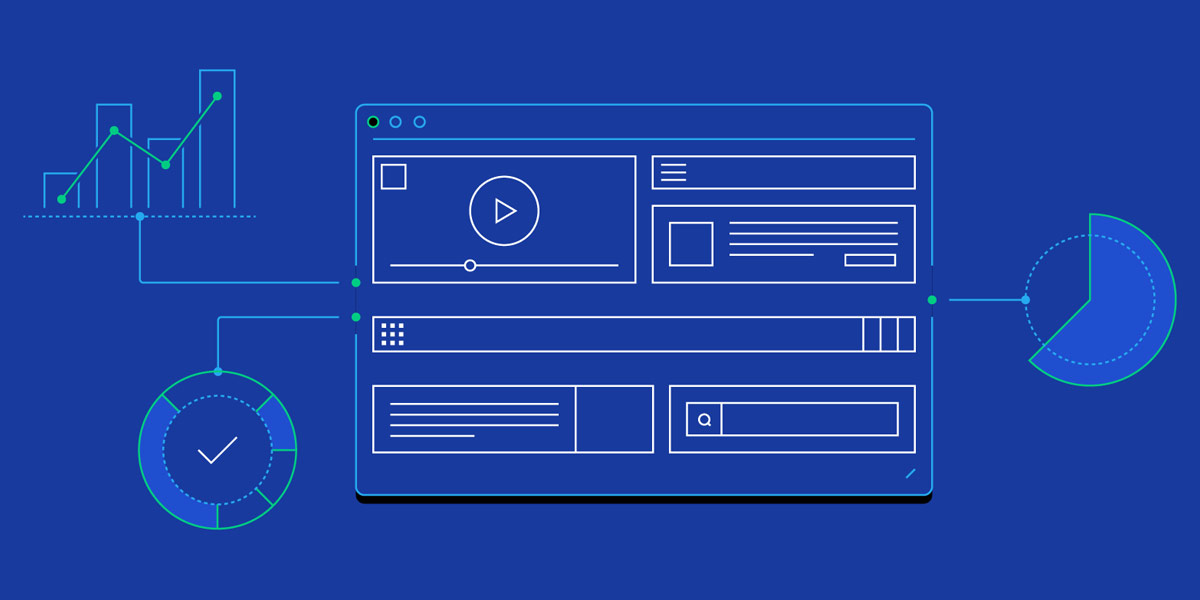What Does User Experience (UX) Mean?

User experience (UX) refers to the overall experience that a user has when interacting with a product, website, or service. In today’s digital age, where customers have countless options to choose from, businesses must prioritize the user experience to stand out from the crowd. In this article, we will discuss why user experience is essential, how it impacts your business, and tips for creating a positive user experience.
Why Is User Experience Essential?
User experience plays a critical role in the success of any product or service. Here are a few reasons why:
Enhances Customer Satisfaction
A good user experience can help increase customer satisfaction, which, in turn, can lead to customer loyalty and repeat business. A product that is easy to use, aesthetically pleasing, and meets the needs of the user is more likely to be used and recommended to others.
Boosts Brand Image and Reputation
A product with a good user experience can help build a positive brand image and reputation. Customers are more likely to remember a product that provides a positive user experience and recommend it to others.
Increases Conversions and Revenue
A good user experience can help increase conversions and revenue. When a product is easy to use and meets the needs of the user, customers are more likely to make a purchase or continue using the product, which can lead to increased revenue.
Reduces Costs
Investing in user experience upfront can help reduce costs in the long run. Products with poor user experiences are more likely to require customer support and maintenance, which can be costly. By creating a positive user experience, businesses can reduce support costs and increase customer satisfaction.

Why Is User Experience Essential?
How Does User Experience Impact Your Business?
User experience can have a significant impact on your business. Here are a few ways it can affect your bottom line:
Customer Retention
A good user experience can help increase customer retention. When customers have a positive experience with a product, they are more likely to continue using it and recommend it to others.
Customer Acquisition
A good user experience can also help with customer acquisition. Customers are more likely to try a new product if it has positive reviews and recommendations from others. A positive user experience can help build a positive reputation and increase customer acquisition.
Conversion Rates
A good user experience can help increase conversion rates. When a product is easy to use and meets the needs of the user, customers are more likely to make a purchase or continue using the product, which can lead to increased revenue.
Brand Image and Reputation
A good user experience can help build a positive brand image and reputation. Customers are more likely to remember a product that provides a positive user experience and recommend it to others.

How Does User Experience Impact Your Business?
Tips for Creating a Positive User Experience
Creating a positive user experience can be challenging, but it is crucial for the success of your product or service. Here are a few tips to keep in mind:
Understand Your Users
To create a positive user experience, you need to understand your users. Who are they? What are their needs? What are their pain points? Conduct user research to gather insights and create user personas to help you design for your target audience.
Keep It Simple
Simplicity is key when it comes to user experience. Make sure your product is easy to use and navigate. Use clear and concise language, and avoid clutter and unnecessary features that can overwhelm the user.
Provide Feedback
Provide feedback to the user when they take an action. Let them know that their action was successful or provide guidance on how to correct an error. This feedback helps the user feel more in control and confident when using the product.
Use Consistent Design and Branding
Consistency in design and branding helps create a cohesive user experience. Use a consistent colour palette, typography, and design elements throughout the product. This creates a sense of familiarity and helps users feel comfortable using the product.
Test and Iterate
User experience is an ongoing process, not a one-time task. Test your product with real users to gather feedback and identify areas for improvement. Use this feedback to make iterative improvements and continue to improve the user experience over time.
Use Responsive Design
With the rise of mobile devices, it is crucial to design for a variety of screen sizes and resolutions. Use responsive design techniques to ensure that your product looks and functions well on all devices.
Accessibility
Accessibility is an important aspect of user experience. Ensure that your product is accessible to users with disabilities by using alt tags for images, providing closed captioning for videos, and designing with colour contrast in mind.
Performance Optimization
The speed and performance of your product can also impact the user experience. Optimize your product for performance by minimizing load times and reducing the size of images and other media files.
Use Engaging Visuals
Visuals can help enhance the user experience by making the product more engaging and easier to understand. Use visuals such as icons, illustrations, and videos to help convey information and guide the user through the product.
Provide Support
Even with a well-designed product, users may need assistance or have questions. Provide support options such as a knowledge base, FAQ section, or customer support chat to help users when they need it.

Tips for Creating a Positive User Experience
Conclusion
User experience is a critical component of building successful products in today’s digital age. It impacts customer satisfaction, brand reputation, and the bottom line of a business. By prioritizing user experience, businesses can create products that are easy to use, aesthetically pleasing, and meet the needs of the user. By following the tips outlined in this article, businesses can create positive user experiences that lead to customer loyalty and repeat business.
FAQ
What is user experience?
User experience, or UX for short, is the overall experience a user has when interacting with a product, service, or system. This includes all aspects of the user’s interaction, including usability, accessibility, and visual design.
What is the difference between UI and UX?
User interface (UI) refers to the visual and interactive elements of a product, such as buttons, menus, and forms. User experience (UX), on the other hand, refers to the overall experience that a user has when interacting with a product. While UI is an important part of UX, UX encompasses all aspects of the user’s interaction, including visual design, usability, accessibility, and emotional response.
Why is user experience important?
User experience is important because it can impact user satisfaction and loyalty, and business success, and can help to accommodate diverse users.
What are the key principles of user experience design?
The key principles of user experience design include:
- User-centred design: placing the user’s needs and goals at the center of the design process
- Usability: designing products that are easy to use and navigate
- Accessibility: designing products that can be used by people with disabilities
- Consistency: ensuring that the design is consistent across all pages and screens
- Clarity: making sure that the design is clear and easy to understand
- Emotional design: designing products that evoke positive emotions in the user
- Context: designing products that take into account the user’s context and environment.
What is the UX design process?
The UX design process typically involves user research, ideation and concept development, prototyping, user testing, and iteration.
What are some examples of good user experience?
Examples of good user experience include products or services that are easy to use, accessible, visually appealing, and meet the needs and goals of the user.
How do you measure user experience?
User experience can be measured through various methods, including surveys, analytics, usability testing, and user feedback. These metrics can help to identify areas for improvement and inform design decisions.
What skills are needed for UX design?
Skills needed for UX design include understanding user needs, knowledge of design principles, proficiency in design tools and software, communication and collaboration skills, and a willingness to continuously learn and iterate.
What are some common UX design mistakes to avoid?
Common UX design mistakes to avoid include a cluttered and complex interface, lack of accessibility features, inconsistent branding, poor visual design, and not considering the needs of diverse users.
How do you create a user-centred design?
To create a user-centered design, it’s important to understand the needs and goals of the user, prioritize usability and accessibility, incorporate user feedback and iteration, and design with empathy and inclusivity.
How can I improve the user experience of my website/app?
There are several ways to improve the user experience of your website or app, including:
- Conducting user research to understand the needs and goals of your users
- Simplifying the design and navigation to make it easy for users to find what they are looking for
- Using clear and concise language to communicate with users
- Designing for mobile devices and different screen sizes
- Conducting usability testing to identify and fix any issues or problems with the design
- Incorporating feedback from users to continuously improve the user experience.

